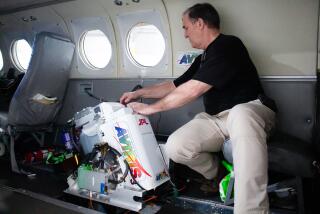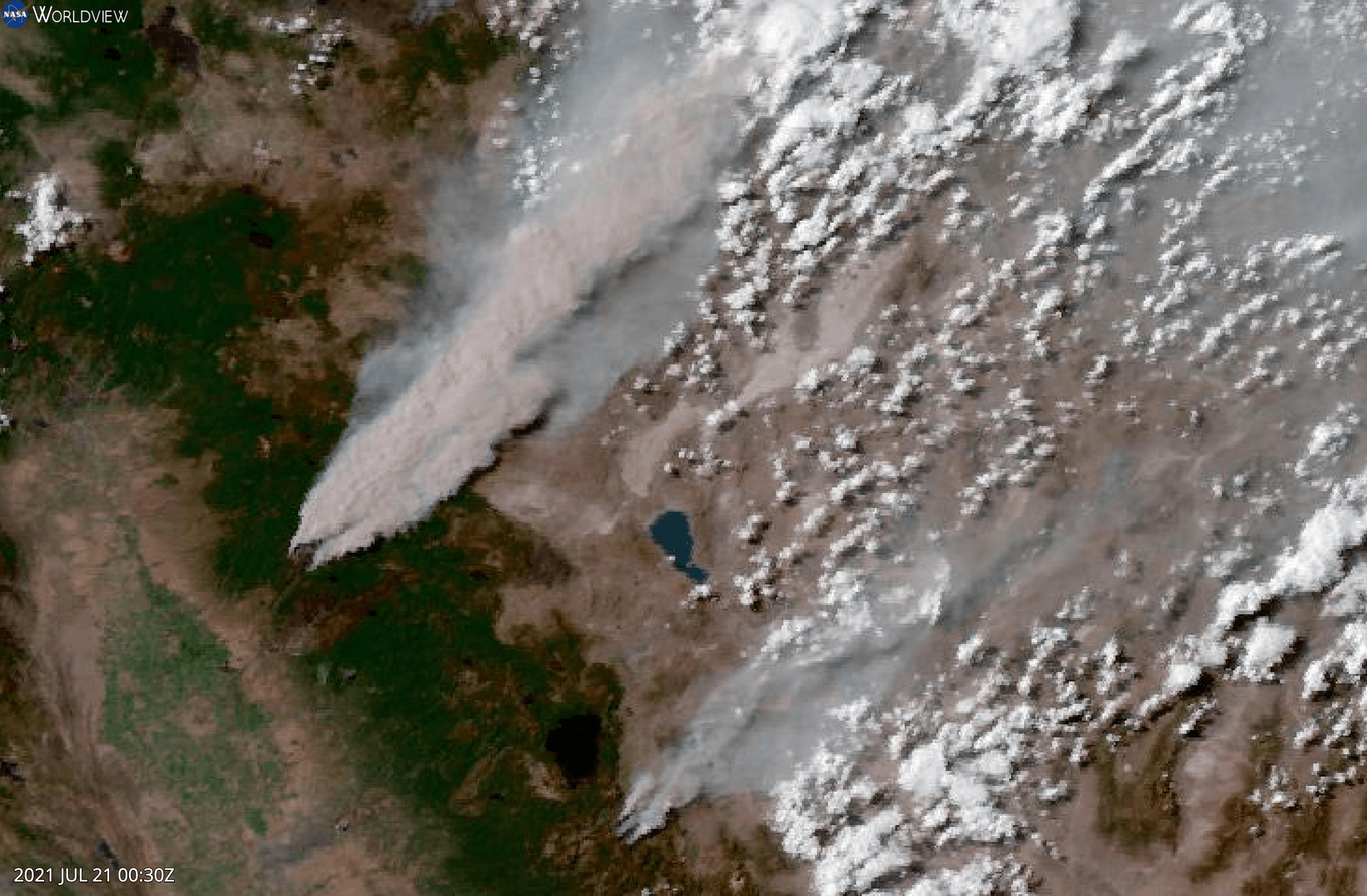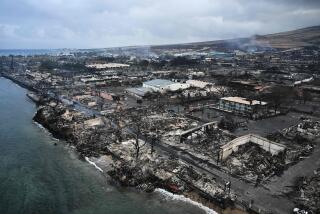Lasers, Holography Tested as Weather Forecasting Tools
WESTMINSTER, Md. — Most nights, David Guerra climbs a spiral staircase to the roof of the physics building at Western Maryland College and shoots laser beams into the quiet sky.
Based on his experiments, the National Aeronautics and Space Administration hopes to mount a similar machine on a satellite within five years to fire lasers into the Earth’s atmosphere.
The goal: better weather forecasts, with implications for everything from food production to disaster preparation.
The project is part of NASA’s New Millennium program, which aims to expand our understanding of the universe economically by using smaller, more efficient instruments that are cheaper to launch into space.
Guerra’s device is a telescope that uses lasers and holography to “see” atmospheric structures. It detects clouds and pollutants, but its real importance is its potential for reading the winds.
Atmospheric winds drive the weather, said Geary Schwemmer, a research engineer at NASA’s Goddard Space Flight Center in Greenbelt, who is overseeing the project.
“If we had a better knowledge of winds, that would give us an improvement in weather forecasting. That’s the bottom line,” he said.
Laser and holographic telescopes could replace the comparatively crude anemometers and weather balloons that now provide our wind data, Schwemmer said. The experimental instruments are 1,000 times more sensitive, capable of reading atmospheric layers in meters, not kilometers, he said.
Schwemmer invented the holographic telescope that Guerra and two students are testing under a three-year, $40,000 cooperative agreement with the space agency. Guerra formerly worked under Schwemmer at NASA.
It is the world’s only laser telescope with a holographic optical element, Schwemmer said.
“We’re sort of perfecting the technology,” Guerra said during a recent demonstration.
The telescope has three main components: a laser, a holographic optical element and a detector. It looks like a 7-foot metal tripod standing next to an end table topped by a blue box resembling a computer’s central processing unit. Directly beneath the tripod is the holographic element, a blue-green glass disc the size of a large pizza.
The laser shoots horizontally out of the box into a mirror that reflects the beam straight down onto the spinning disc. The holographic disc bounces the beam back upward at an angle.
As the concentrated beam of light moves upward, gradually diffusing, it strikes particles in the air that reflect the light in all directions.
Some of the reflected light falls back onto the holographic disc, which then focuses the reflected light onto the detector atop the tripod. The detector transforms the light into electrical impulses that can be used to discern wind speed and direction, as well as cloud boundaries and concentrations of particles in the atmosphere.
“You can tell which way the clouds are moving and which way the atmosphere is moving at different levels, so you can look for wind shear and things like that,” Guerra said. Wind shear, which occurs when winds move in different directions in adjacent layers of the atmosphere, has been blamed for plane crashes.
Schwemmer said the holographic element makes the telescope one-half to one-third as heavy as laser-based telescopes that use mirrors to reflect and capture the light. Reducing the telescope’s weight is important when every ounce rocketed into space costs thousands of dollars.
A version of the holographic telescope will be tested on a space shuttle flight as early as 2000, and one could be mounted on a satellite within two years after that, he said.






